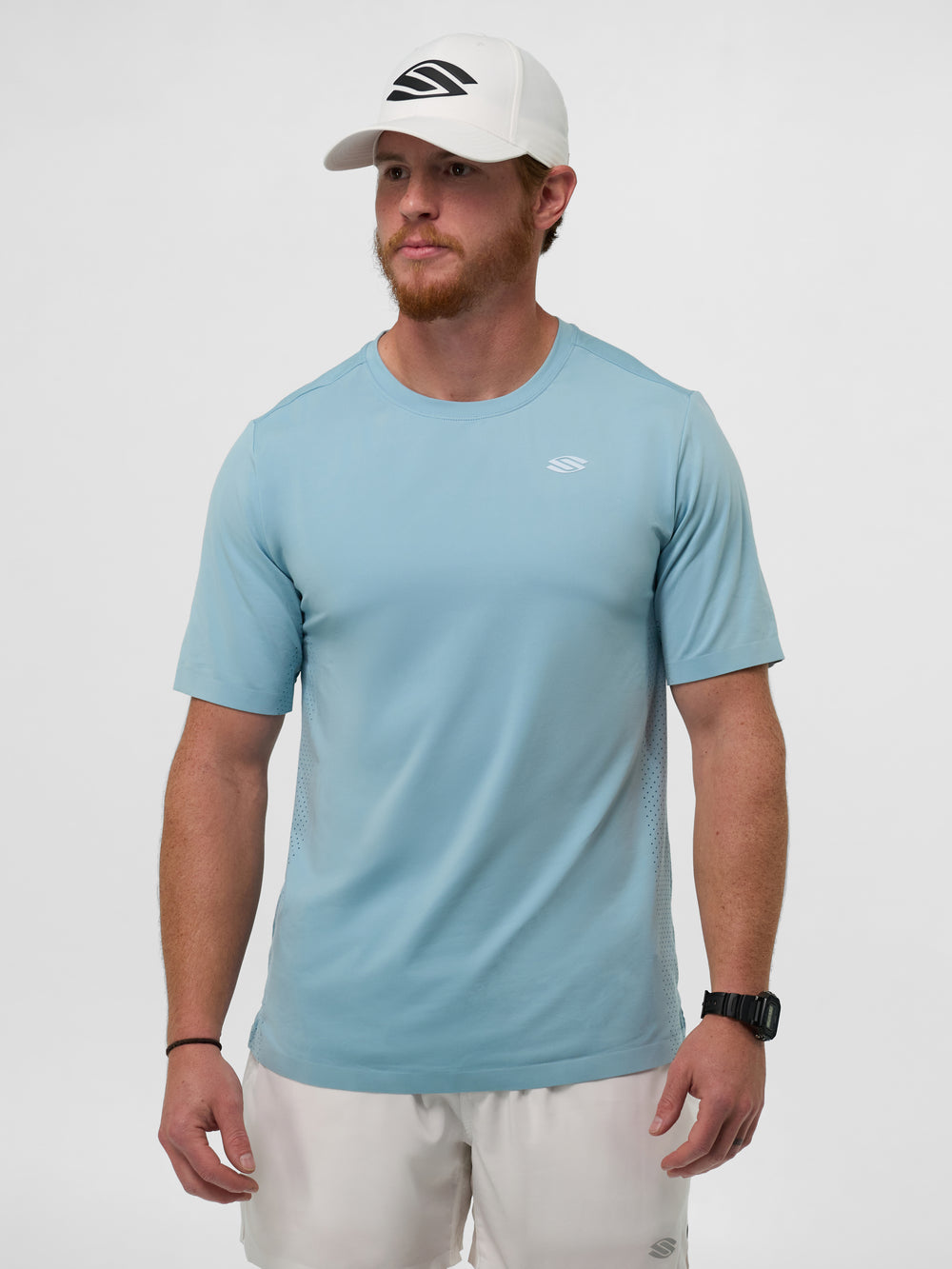
Unfortunately, most everyone suffers from lower back at some time in their lives, especially as they get older.
There are five vertebrae that comprise the lumbar spine. The 5th lumbar vertebra rests on the sacrum, and at the end of the sacrum is the coccyx. These bones are held in place by an interposed network of ligaments, muscles, cartilage and soft tissue. These structures hold the vertebrae together, add stability and allow motion. Between each vertebral body is a joint formed by the intervertebral disc. The disc is a fibrocartilaginous structure that helps to dissipate mechanical stress and it resembles a piece of gristle. Severe or repeated injury or insult can cause the annular fibers within the disc to herniate (protrude) or rupture (tear) and cause intense pain to the adjacent spinal nerves and surrounding soft tissue

The lumbar spine
Mechanical lower back pain is classified as either intrinsic (postural and muscular) or extrinsic (pathologic). Extrinsic causes of lower back pain would include tumors, infections, osteoarthritis, scoliosis, gynecological, prostatic or renal problems. Extrinsic causes of lower back pain can usually be diagnosed with a through history and a comprehensive physical examination. Intrinsic causes of lower back pain are caused by poor posture, lack of muscle tone, a weak core, trauma or instability of the vertebrae.
In the past treatment for a serious mechanical lower back injury consisted of traction, bed rest and medication. This regimen is generally ineffective, and may have aggravated the situation by allowing further muscle atrophy due to the inactivity. In addition, this lack of activity can have devastating emotional and psychological consequences on an athlete. The approach that most doctors now take is to actively rehabilitate the injured area. This is done with mild exercise, stretching, and muscle strengthening to prevent further injury. The vast majority of lower back and disc injuries respond well to conservative care, with only a small number requiring medical or surgical intervention.
Unfortunately, pickleball does little to increase the strength of the abdominal or core muscles. These abdominal and core muscles play a key role in aiding the stability of the lower back and pelvic region. Adequate strength and endurance in the core and lower back is vital to reducing pelvic tilt. Stretching the lower extremities, especially the Hamstrings also helps to reduce the pelvic tilt.
Flexibility and Core Strength: Significant contributing factors to lower back discomfort are a weak core, tight pelvic, hamstring, calf and lower back muscles. Stretching and strengthening these areas will lengthen and relax the hamstrings, reduce pelvic tilt and strengthen abdominal, pelvic and supporting lumbar paraspinal musculature.

▲Hamstring Stretch: Lie on your back with the right leg bent. Wrap the rope around the arch or middle of the left foot. Lock the knee and contract the quadriceps muscle group (front of the thigh). "Climb up" the rope with your hands and hold for 2 seconds. Return the left leg to the floor. After 12-15 reps, do the other leg.

▲Hip, Gluteal and Lower Back stretch: Lie on your back and fully extend the right leg. Bend the left knee and tighten the abdominal muscles. Grab the left leg with the right hand and the thigh with the left hand. Lift the left knee toward the right shoulder and ground as far as possible and hold for 2 seconds. Return to the original position and repeat 12-15 times, then do the other leg.


▲Lower Back and Pelvic Stretch: Lie on your back and bring both thighs up so they are at a 90-degree angle (perpendicular) to the floor. Place your arms at your sides and twist to the right and the left so that the down leg contacts the floor. Do this 25 times to each side.


▲ Scissors: (rectus abdominus) Lie on your back with your arms and legs fully extended, hands and feet touching the floor (top photo). Slowly bring your arms and legs straight up at the same time so they meet directly above your torso, then slowly lower to the starting position. Do 3 sets of 15-25 reps

▲Trunk Raise: (lower back muscles, erector spinae) Lie on your stomach with your hands behind your neck, arch your back while simultaneously raising both legs and hold for 10-15 seconds. Do 3 sets of 10-12 reps. For additional resistance add ankle weights and a light weight behind the head.
You can check out a couple additional stretches and exercises from Selkirk TV!
Lower back pain is caused or exacerbated by numerous other factors and activities other than Pickleball, especially poor posture. Posture problems occur primarily while sitting on a chair or to a lesser extent while standing. Slouching while sitting or standing, rounds out the lower back and inflames the ligaments, muscles and tendons along the sides of the spine. Many chairs, couches and car seats provide poor lower back support. A cheap and easy way to increase lower back support is to make a roll out of a thick towel and place it behind the lower back while seated.
Treatment Options for Lower Back Pain:
If you do develop lower back pain don’t panic, most incidents of lower back pain are not serious and will resolve within a couple of weeks with simple home self-care. Almost 85% of the population has back pain at some time in their lives and 97% of these people get well in 4-6 weeks with conservative treatment. In addition, there are many treatment options available to deal with this very common condition. Lower back pain is divided into one of three general categories;
- Nonspecific lower back pain (85% of patients fall into this category) most of these are classified as strains and sprains
- Back pain potentially associated with spinal conditions, such as spinal stenosis, disc lesions, vertebral compression and fractures.
- Back pain potentially associated with another specific cause such as malignancies, space occupying lesions, infection or vascular problems.
There are certain signs and symptoms associated with lower back pain that can indicate a serious situation where emergency treatment is needed immediately.
- Cauda Equina syndrome; This is a serious neurologic condition causing an acute loss of function of the lumbar plexus. It is characterized by sudden loss of bowel and/or bladder control or dysfunction, severe or progressive neurologic changes, saddle anesthesia, weakness of the lower extremities, and possibly a drop foot.
- Severe lower back pain following significant trauma.
- Severe continuous abdominal and lower back pain could indicate an abdominal aortic aneurysm.
- Night pain, weight loss, fever or other signs of infection or cancer, that accompany severe lower back pain.
If you have developed lower back pain it is important to stay active and try to rest in a comfortable position. Take short walks or stretch every few hours to loosen up the muscles and tendons. Staying active is much better for recovery than strict bed rest. In fact, staying in bed for more than one or two days can actually worsen the condition by increasing stiffness and muscle weakness. If there is severe pain and muscle spasms consider the application of an ice pack for 15-20 minutes several times a day and the taking over the counter medication. The medications commonly taken for this are known as NSAIDS or non-steroidal anti-inflammatory drugs, such as Ibuprofen (Advil or Motrin), Naproxen (Aleve or Naprosyn) or Salicylates (Aspirin). If the pain, inflammation and muscle spasms persist for more than a couple of weeks consider seeing a health care specialist for treatment options which may include physical therapy, traction, rehabilitation, and mobilization. Surgery is rarely needed for lower back pain even in the presence of a disc injury or nerve damage. Once you have a significant incidence of lower back pain the problem is more likely to recur. To avoid future episodes of lower back pain, keep your abdomen and core muscles strong, use good posture, keep your weight down and lift properly.
About the Author
Dr. Alan Bragman is a chiropractor living in Atlanta, Georgia. He is an IPTPA level 2 certified coach. He was on the medical advisory board at Bicycling Magazine for 15 years and has written for numerous other sports publications including USA Pickleball Magazine, Speedskating Times, Atlanta Sports and fitness and Road Bike rider.
Disclaimer: The medical advice, views, and opinions expressed herein are those of the authors and contributors, and do not necessarily reflect those of Selkirk Sport or its affiliates. Selkirk Sport does not endorse, warrant, and/or assume any legal liability or responsibility for the accuracy, completeness, or usefulness of any information, apparatus, product, or process discussed. Specific medical advice should be discussed and reviewed with a qualified physician.






















